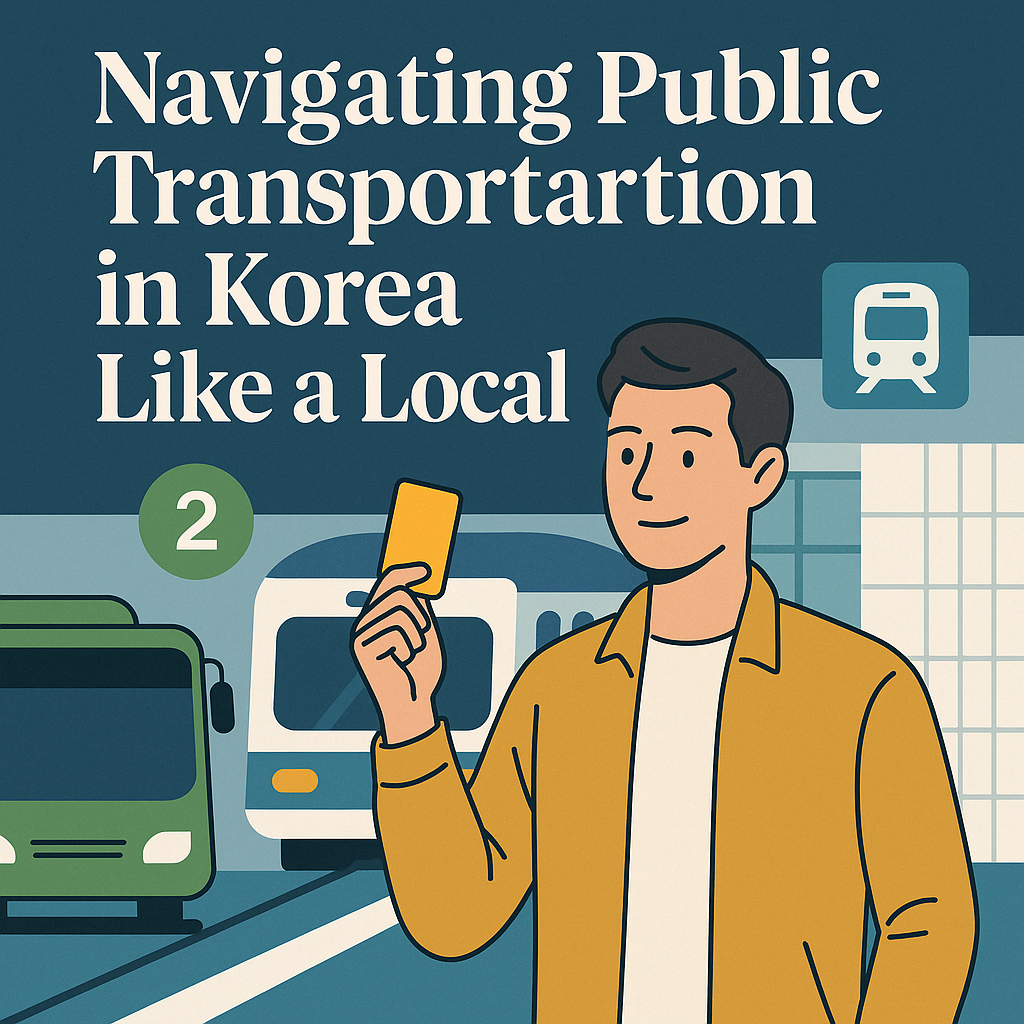Korea’s public transportation system is efficient, affordable, and highly integrated—but it can be overwhelming at first, especially for newcomers. This guide helps you master buses, subways, and trains like a local, saving both time and money in the process.
1. T-Money Card: Your Essential Tool
- Works on buses, subways, taxis, and even some convenience stores
- Buy and recharge at any CU, GS25, or 7-Eleven
- Fare discounts compared to cash payments
2. Subway System: Color-Coded and Clean
- Seoul’s subway is one of the world’s best: punctual, clean, and safe
- Color-coded lines with English signs
- Free subway apps like “Kakao Metro” or “Subway Korea” help with navigation
3. Bus Types and Colors
- Blue: long-distance routes across districts
- Green: neighborhood or connector routes
- Red: express buses from suburbs to city center
- Yellow: circular routes around local areas
Buses use the same T-Money card, and transfers between bus and subway are free within 30 minutes.
4. Intercity Travel: KTX and Express Buses
- KTX: High-speed train linking major cities (Seoul–Busan in 2.5 hrs)
- Express buses: More affordable, run from terminals in every city
- Online booking available in English via apps or websites
5. Navigating Transfers and Transfer Discounts
- Up to 4 transfers allowed without additional fare within 30 minutes
- Transfer discounts apply only when using the same T-Money card
- Don’t tap out too early—wait for the exit gate
6. Etiquette and Local Habits
- Keep quiet during rides
- Offer seats to elderly or pregnant passengers
- Eating or speaking loudly is frowned upon
Key Takeaways
- T-Money card is the key to all public transport
- Subway apps and clear signage make traveling easy, even without Korean skills
- Understanding bus types and transfer rules saves both money and confusion
